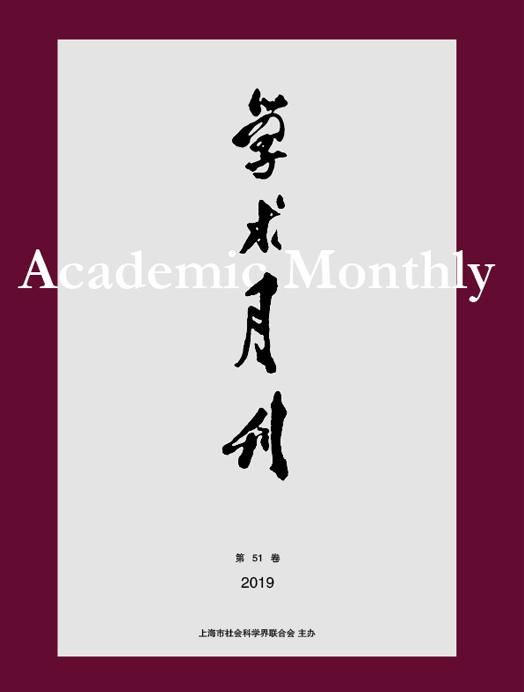Citation:
Guanghua WAN, Weirui JIANG and Jiehao ZHANG. Common Prosperity under the Changes Unseen in a Century: From a Perspective on Income Gap[J]. Academic Monthly, 2022, 54(8): 32-44.

Common Prosperity under the Changes Unseen in a Century: From a Perspective on Income Gap
-
Abstract
The changes unseen in a century, coupled with the surging tide of anti-globalization, have made the “high export, high investment, high growth” pattern of economic development in East Asia unsustainable and posed a serious challenge to the long-term growth of China’s economy, which has long been faced with under consumption. In view of this, China must promote common prosperity and narrow the income gap as soon as possible in order to boost domestic demand and promote a dual circulation. Focusing on the issue of income inequality, this paper reports for the first time on the China’s income ladder, analyses the changing trends in income distribution, and discusses the sources and key factors of China’s income inequality from a number of perspectives. We finds that the main causes of income inequality in China are the urban-rural segmentation, the low labor share, the large education gap and inadequate social security. In response to these problems, this paper proposes the following policy recommendations: replace hukou (“户口”) with residence permits and speed up the process of urbanization and citizenization, implement 12-year compulsory education and continue to expand university enrolment, increase social security expenditure and gradually eliminate moderate poverty, and improve the tax and financial system to increase the labor share. Steady implementation of these initiatives over the next 30 years is expected to reduce China’s income Gini index by 30-40%, while boosting economic growth and enabling China to achieve common prosperity after the middle of the century.
-

-
References
-
Access
-
-
[1]
Wenjing ZHONG
, Biliang LUO
. The Asset Logic of Farmers Moving towards Common Prosperity. Academic Monthly,
2022, 54(11): 38-53.
-
[2]
LUO Zhe
. . Academic Monthly,
2018, 50(7): 90-98.
-
[3]
Chunguang WANG
. Rural Non-Employment Income and the Possible Future Picture of Chinese Rural Modernization. Academic Monthly,
2022, 54(12): 128-140.
-
[4]
Xueyang CHENG
. Rebuilding Land Property Rights: The Basic Experience and Direction of Land System Reform in China. Academic Monthly,
2020, 52(4): 98-108.
-
[5]
DU Yushen
. . Academic Monthly,
2018, 50(8): 53-68.
-
[6]
Guanghua WAN
, Meihua ZHU
. De-globalization: Features, Causes and Outlook. Academic Monthly,
2020, 52(7): 33-47.
-
[7]
TIAN Guoqiang
. Comparison of Moral Philosophies between Smith and Kant. Academic Monthly,
2023, 55(5): 36-44.
-
[8]
Shiye TIAN
, Ping LI
. Changes of Rural Land Property Rights System in China from the Perspective of Development. Academic Monthly,
2021, 53(12): 74-84.
-
[9]
,
. . Academic Monthly,
2016, 48(12): 75-85.
-
[10]
LI Mengmeng
. The Impact of Rural Collective Operating Construction Land Entering the Market on the Income Gap between Urban and Rural Areas. Academic Monthly,
2023, 55(10): 49-60.
-
[11]
,
. . Academic Monthly,
2016, 48(11): 108-117.
-
[12]
WEI Qingong
. Beyond Income Inequality: A Novel Dissecting of the Relationship between Happiness Inequality and Residents’ Health. Academic Monthly,
2024, 56(2): 136-148.
-
[13]
. . Academic Monthly,
2016, 48(11): 95-107.
-
[14]
LIU Shouying
. Open Access Order and the Common Prosperity for Rural People. Academic Monthly,
2023, 55(8): 41-60.
-
[15]
. . Academic Monthly,
2016, 48(01): 75-86.
-
[16]
Jing GE
, Ruiming LIU
. China’s Economic Growth, Fluctuation and Regional Disparities. Academic Monthly,
2022, 54(2): 63-78.
-
[17]
Shao’an HUANG
, Wei WANG
, Caiquan BAI
. Informal Institutions and North-South Economic Gap in China. Academic Monthly,
2023, 55(3): 45-57.
-
[18]
. . Academic Monthly,
2016, 48(09): 140-148.
-
[19]
. . Academic Monthly,
2016, 48(05): 94-109.
-
[20]
Yunfeng HE
, Erliang PAN
. Better Life, People’s Livelihood Security and the Maximization of the Right to Labor Felicity. Academic Monthly,
2022, 54(2): 79-90.
-
-




 沪公网安备 31010102003103号
沪公网安备 31010102003103号 DownLoad:
DownLoad:




